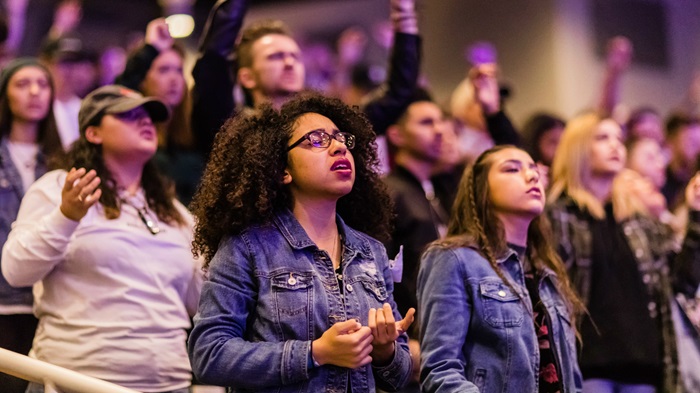Only Half of Kids Raised Southern Baptist Stay Southern Baptist
By now, Southern Baptists recognize that their movement is in a decline that shows no signs of changing course.
By their own measures, they’re not adding as many new believers to their flocks each year—the Southern Baptist Convention (SBC) went from baptizing 321,000 in 2007 to 246,000 last year.
Plus, despite adding more than 10,000 more cooperating churches over the past couple of decades, church attendance across the denomination is also dropping.
In 2006, the SBC had 16.3 million members, now that’s down to less than 15 million, according to the denomination’s most recent Annual Church Profile (ACP).
Outside surveys have also tracked the decline. New findings released this year show the Southern Baptist trajectory more closely resembles the downward trend among the United Methodist Church (UMC), the nation’s largest mainline Protestant body, than fellow evangelicals in non-denominational traditions.
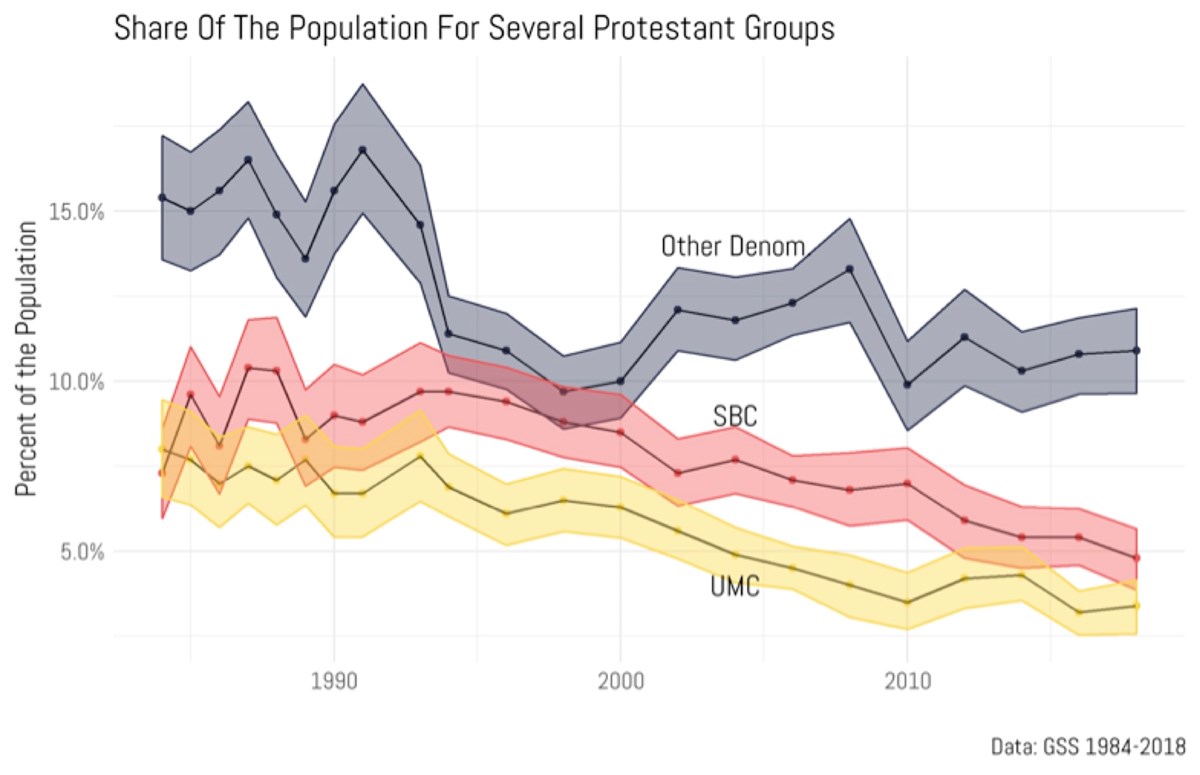
According to the General Social Survey (GSS), nearly the same percentage of Americans identified with the SBC as the UMC in the 1980s, then the two denominations’ trends began to separate, and both experienced a slow, steady decline from the mid-’90s on.
While close to 1 in 10 Americans identified as Southern Baptist in 1987, that number has been cut in half to 1 in 20 (4.8%) in 2018. Data from the Cooperative Congressional Election Study (CCES) reinforces this point as well, with 5.4 percent of the sample identifying as SBC.
There are four major ways for a religious denomination to change in size over a longer period of time: They add members through conversions, they keep those born into the faith as they grow up, they shed members through people defecting to other religious traditions, or members die and are not replaced by young adults.
Every religious group experiences these losses to some extent—like a bucket that has sprung a few leaks. While some of the water will inevitably trickle out, it’s possible to put more water back in the bucket from other sources. If the amount of water that leaks out is greater than the amount of water that is replaced, then a decline will occur in overall members. The Southern Baptist Convention has a bucket that is aging and springing more leaks every year.
Conversion and Defection
As evangelicals, Southern Baptists put particular emphasis on conversion as a potential source of membership growth and celebrated around a quarter of a million baptisms last year, according to ACP figures. However, nearly all Southern Baptists have been part of the denomination for a while.
CCES, which tracked the same group of 9,500 respondents in 2010, 2012, and 2014, found few newcomers to the SBC during that time. Of the 476 Southern Baptists in the sample in 2014, close to all of them (97.9%) had also identified as Baptists in 2010. Of those who converted to the SBC, two had been Catholics, two were from other faiths, and six had been religious “nones.” These numbers are too small to make claims about converts from any specific group, but the overall impression is clear: Southern Baptists are not seeing significant growth through conversion.
The necessary follow-up question, then is: Are a lot of Southern Baptists leaving the faith? CCES data also showed that 91.8 percent of people who started out as SBC in 2010 were still SBC four years later. Of the 37 people in the sample who left the SBC between 2010 and 2014—not a significant enough portion to extrapolate—31 of them either became a non-denominational Protestant or some other type of Protestant Christian. Just two became “nones.” Obviously, any defection is disappointing for those who want to see the SBC grow, but based on this sample, of the members who do leave, they often don’t stray too far.
Births and Deaths
The last two factors around shifts in the denomination have to do with whether enough children born into Southern Baptist families remain in the church—or return as adults—to offset the eldest generation, which is dying off.
Recent research by University of Oklahoma sociologist Samuel Perry concluded that evangelical Protestants have seen a decline in fertility in recent years. It’s a well-known phenomenon that young people drift away from church attendance in their 20s and 30s but return when they get married and have children.
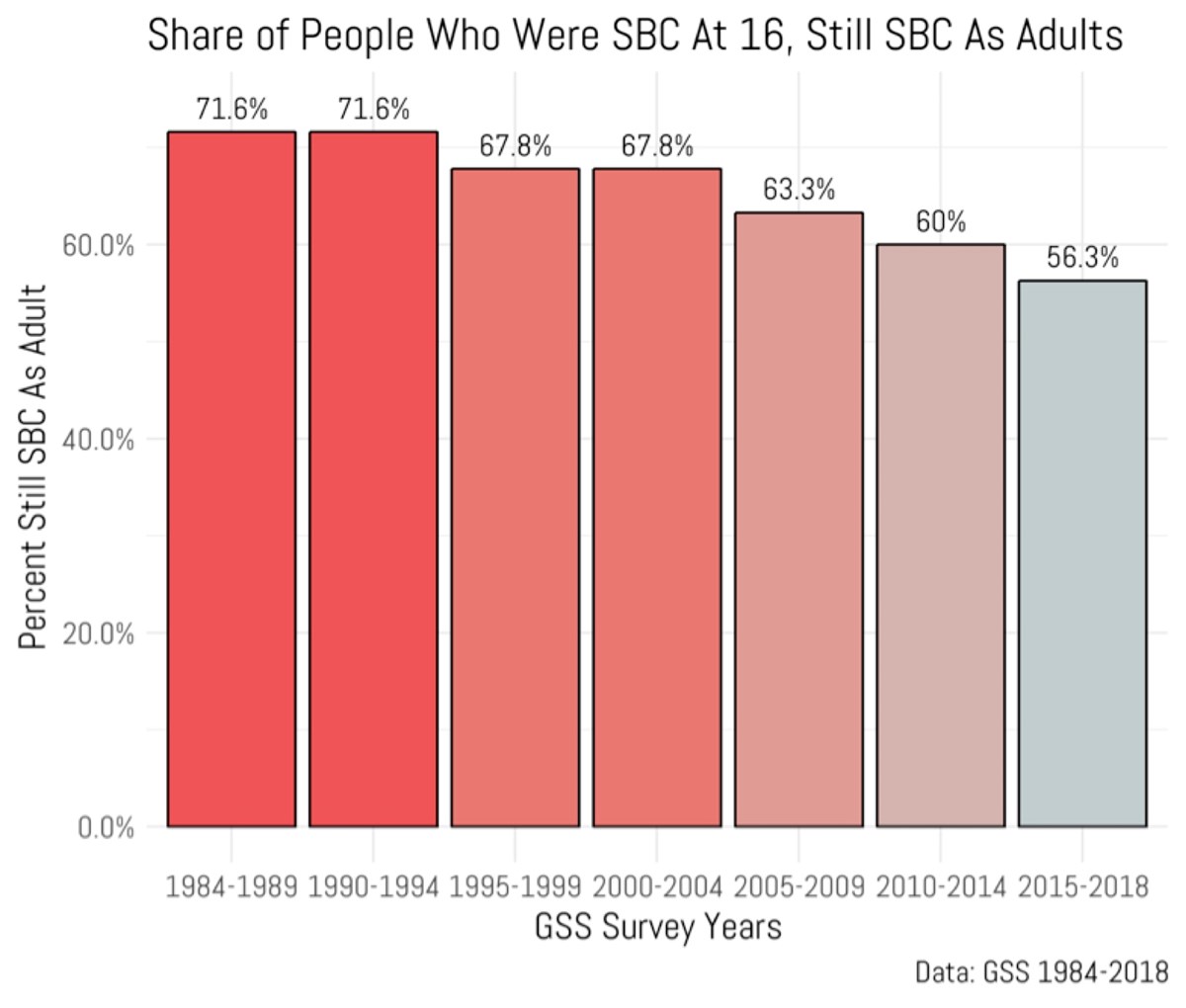
The GSS, which asks respondents about their current religious affiliation as well as what religion were they were raised as, shows that fewer Southern Baptists are sticking with their parents’ denomination.
For much of the ’80s and ’90s, Southern Baptist kids were pretty likely to grow up to become Southern Baptist adults: Seven in ten maintained their SBC identity into adulthood in surveys conducted between 1984 and 1994.
That has declined precipitously. In the most recent surveys conducted between 2015 and 2018, just over half of those raised Southern Baptist were still with the SBC. In other words, nearly half of Southern Baptists kids leave and never come back.
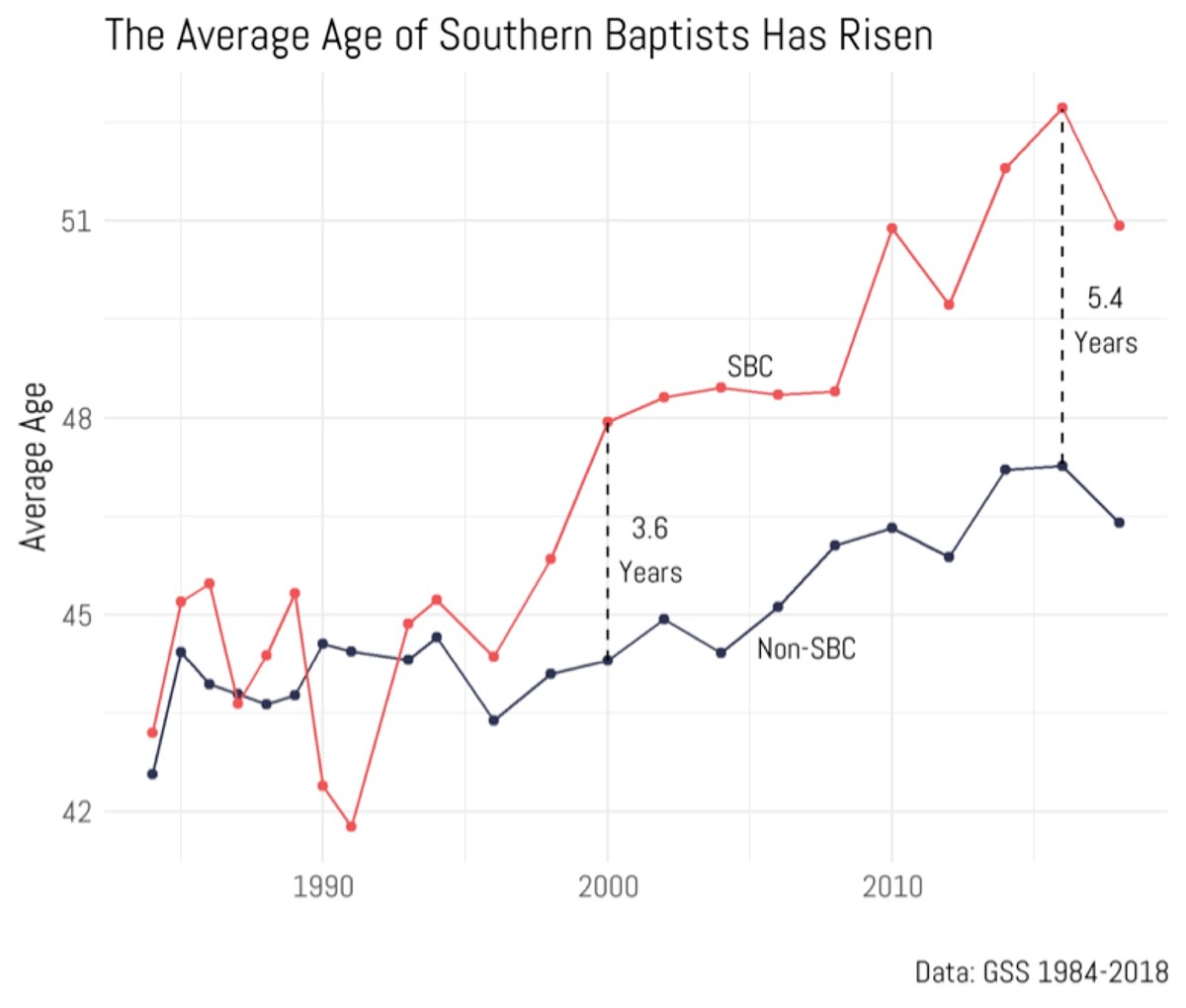
The deaths of older members also have a net impact on the size of the SBC, particularly as the denomination as a whole ages. When older members make up a larger share of the movement, those losses will only accelerate and therefore pressure mounts to continue adding new members at an ever-increasing pace.
The graph above portends a concerning future for Southern Baptists. Even until the mid-1990s, there was no significant difference in the average age of SBC affiliates and the general population. That is no longer the case. The age gap between the two groups was 3.6 years in 2000 and has now expanded to 5.4 years in 2016.
The mean age for Southern Baptists in 1984 was 43.2; in 2016, it was 52.7. I have written about this before. White America is aging rapidly, and significant shifts to American religion and society are inevitable.
Generational Shift
Taken together, these results do not paint a positive picture for the future of the largest denomination in the United States. While very few people actually leave a Southern Baptist church, an even smaller number converts to the SBC. Therefore the changes in overall size due to conversion and defection are relatively minor.
However, where the real worry comes is related to a generational shift in the American population. In the 1980s and 1990s, Southern Baptists could count on a huge majority of the children born and raised in the church to become committed and active members of the congregation as adults. That has eroded over time. Now, it’s likely that half of the children being raised Southern Baptist today will not maintain that identity into adulthood.
Compounding that fact, the average Southern Baptist is now nearly ten years older than they were in the mid-1980s. The water is leaking out of the bucket at an ever-quickening rate and the amount of water that is being added is slowing to a trickle. There is little reason to believe that the SBC won’t sustain serious declines in the next 10–20 years.
If there is any silver lining to be found in these results it is this: Half of youngest Southern Baptists (those between the ages of 18 and 35), attend services at least once a week. That is the highest rate of attendance of any group aside from those 65 and older. This is a strong foundation to build upon.
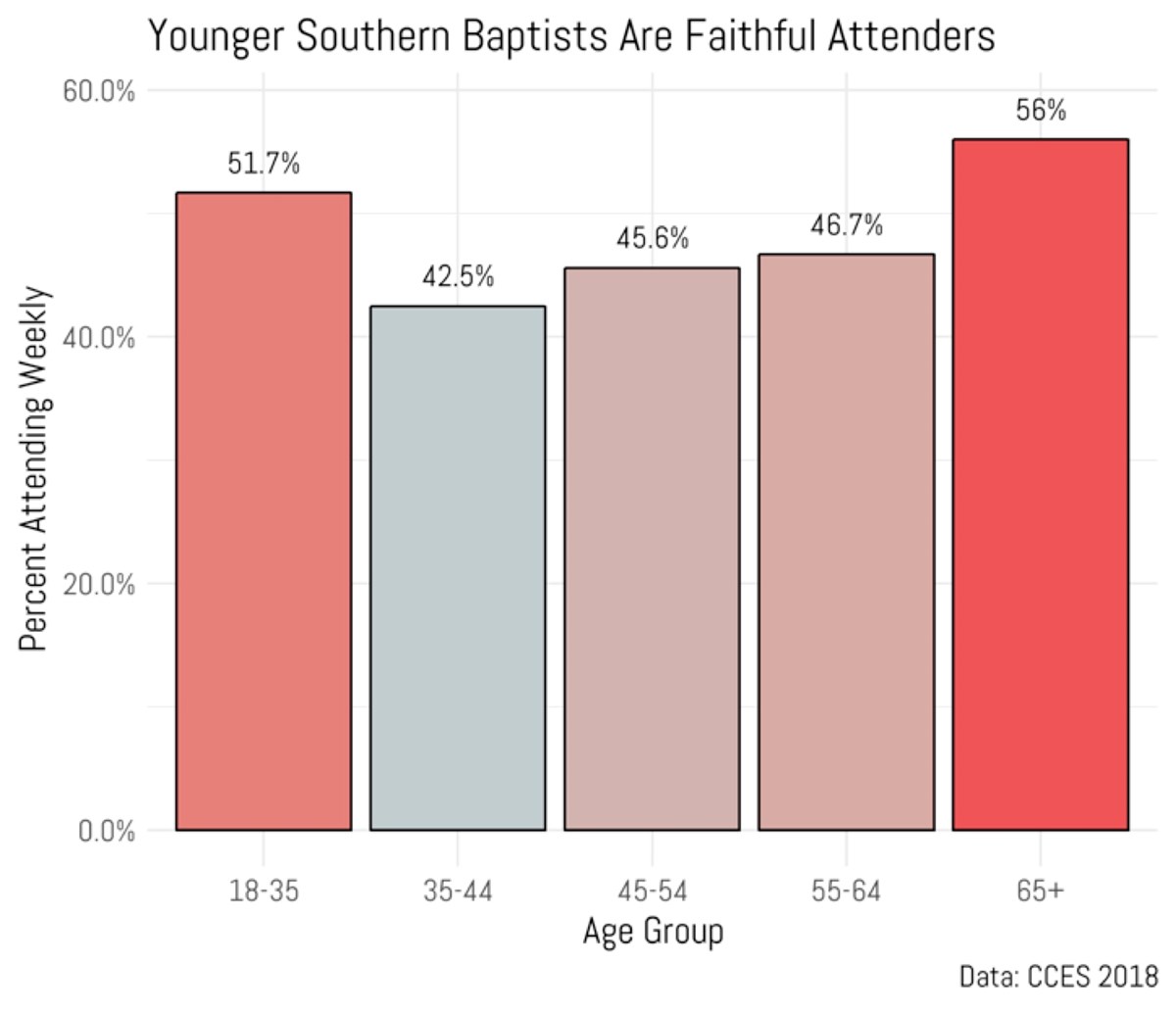
Just as researchers such as Ed Stetzer have suggested that much of the decline in overall Christian affiliation in the US can be attributed to “nominal” believers leaving the faith, it appears that the young Southern Baptists who stick around are particularly committed to their church and their beliefs.
Leaders such as SBC president J. D. Greear are already praying and working for gospel revival through the denomination’s young leaders. He stated, “For the upcoming generation, our prayer should be to see an increase in evangelism, church planting and revitalization, and ultimately an end to decades of decline.”


